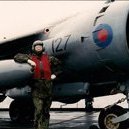Search the Community
Showing results for tags 'Armoured Cars'.
-
The kit is now available for pre-order. Expected for September 2022! https://www.copperstatemodels.com/page/product_info/304/WzUsIltdIl0%3D There's also a couple of Freikorps soldiers and photo etch parts available along with the armoured car. https://www.copperstatemodels.com/page/store/WzUsIls2XSJd https://www.copperstatemodels.com/page/store/WzUsIlszXSJd https://m.facebook.com/100028086627314/
-
M8/M20 Armoured Cars Squadron Walk Around book In July 1941, the Ordnance Department initiated a development of a new fast tank destroyer to replace the M6 37 mm Gun Motor Carriage, which was essentially a ¾-ton truck with a 37 mm gun installed in the rear bed. The requirement was for a 6x4 wheeled vehicle armed with a 37 mm gun, a coaxial machine gun mounted in a turret, and a machine gun in the front hull. Its glacis armour was supposed to withstand fire from a .50 in (12.7 mm) machine gun and side armour from a .30 in (7.62 mm) machine gun. Prototypes were submitted by Studebaker (designated T21), Ford (T22) and Chrysler (T23), all of them similar in design and appearance. In April 1942, the T22 was selected despite complaints about deficiencies, due to the need for vehicles. By then, it was clear that the 37 mm gun would not be effective against the front armour of German tanks; so, the new armored car, designated M8 Light Armored Car, took on the reconnaissance role instead. Contract issues and minor design improvements delayed serial production until March 1943. Production ended in June 1945. A total of 8,523 units were built, excluding the M20 Armored Utility Car (see Variants). The M8 was manufactured at the Ford Motor Company plant in Saint Paul, Minnesota. Even today in some areas of the world these vehicles are still being used as checkpoint guards and crowd control. Only the first couple of pages in this book are dedicated to the history and development of the M8/M20 armoured cars. The rest of the book of eighty pages is crammed full of photographs and diagrams of both vehicles. The M20 was a development of the M8 and was designed as a utility version which replaced the turret with a parapet open mounting for the 50 cal Browning. There are a wide variety of photographs, ranging from the historical and very interesting WWII vintage shots of the vehicles in use, to some excellent and very useful walkround photographs of a preserved machine in private hands. There are also more pictures showing a vehicle in a slightly worse state of preservation, but that which is being restored. All photos are annotated, telling what the parts shown are and how, in some cases, the vehicles were modified in the field or through front line experience, have been altered on the production line. All the modern photos are very clear and well shot giving a tremendous amount of detail that is invaluable for the modeller. Conclusion This is another super book from Squadron Publications which gives a wealth of detail to the modeller not just of the production vehicle, but items such as the field modifications and alterations which the crews carried out to make their lives a little easier on the front line. This is a very useful and interesting title which I can heartily recommend. Review sample courtesy of



